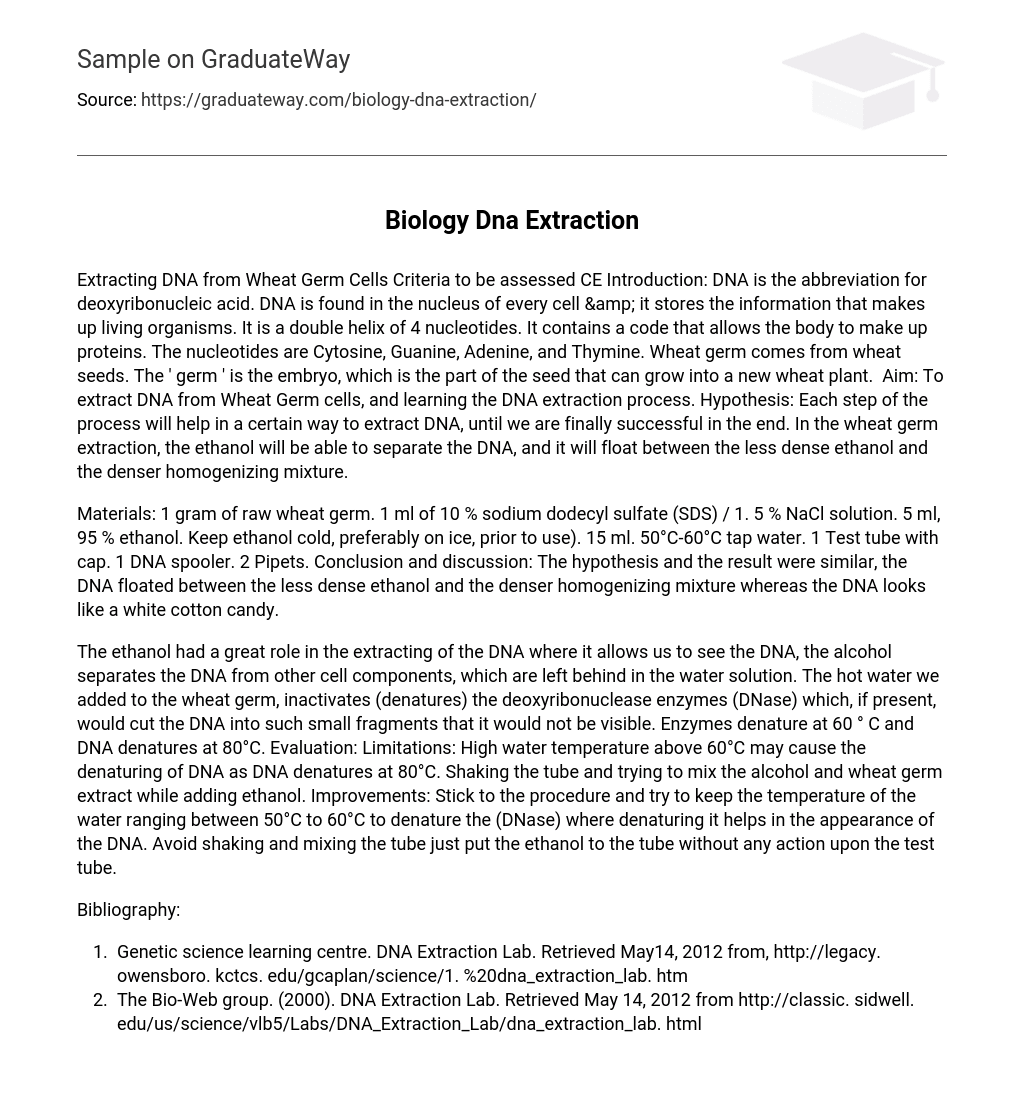Extracting DNA from Wheat Germ Cells Criteria to be assessed CE Introduction: DNA is the abbreviation for deoxyribonucleic acid. DNA is found in the nucleus of every cell & it stores the information that makes up living organisms. It is a double helix of 4 nucleotides. It contains a code that allows the body to make up proteins. The nucleotides are Cytosine, Guanine, Adenine, and Thymine. Wheat germ comes from wheat seeds. The ‘ germ ‘ is the embryo, which is the part of the seed that can grow into a new wheat plant. Aim: To extract DNA from Wheat Germ cells, and learning the DNA extraction process. Hypothesis: Each step of the process will help in a certain way to extract DNA, until we are finally successful in the end. In the wheat germ extraction, the ethanol will be able to separate the DNA, and it will float between the less dense ethanol and the denser homogenizing mixture.
Materials: 1 gram of raw wheat germ. 1 ml of 10 % sodium dodecyl sulfate (SDS) / 1. 5 % NaCl solution. 5 ml, 95 % ethanol. Keep ethanol cold, preferably on ice, prior to use). 15 ml. 50°C-60°C tap water. 1 Test tube with cap. 1 DNA spooler. 2 Pipets. Conclusion and discussion: The hypothesis and the result were similar, the DNA floated between the less dense ethanol and the denser homogenizing mixture whereas the DNA looks like a white cotton candy.
The ethanol had a great role in the extracting of the DNA where it allows us to see the DNA, the alcohol separates the DNA from other cell components, which are left behind in the water solution. The hot water we added to the wheat germ, inactivates (denatures) the deoxyribonuclease enzymes (DNase) which, if present, would cut the DNA into such small fragments that it would not be visible. Enzymes denature at 60 ° C and DNA denatures at 80°C. Evaluation: Limitations: High water temperature above 60°C may cause the denaturing of DNA as DNA denatures at 80°C. Shaking the tube and trying to mix the alcohol and wheat germ extract while adding ethanol. Improvements: Stick to the procedure and try to keep the temperature of the water ranging between 50°C to 60°C to denature the (DNase) where denaturing it helps in the appearance of the DNA. Avoid shaking and mixing the tube just put the ethanol to the tube without any action upon the test tube.
Bibliography:
- Genetic science learning centre. DNA Extraction Lab. Retrieved May14, 2012 from, http://legacy. owensboro. kctcs. edu/gcaplan/science/1. %20dna_extraction_lab. htm
- The Bio-Web group. (2000). DNA Extraction Lab. Retrieved May 14, 2012 from http://classic. sidwell. edu/us/science/vlb5/Labs/DNA_Extraction_Lab/dna_extraction_lab. html





